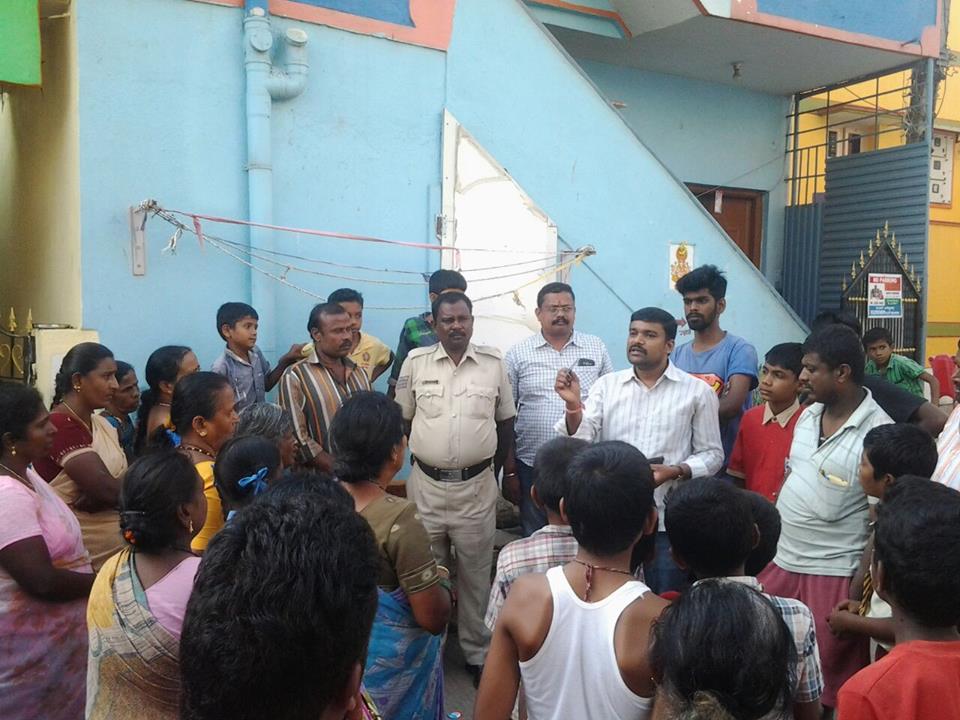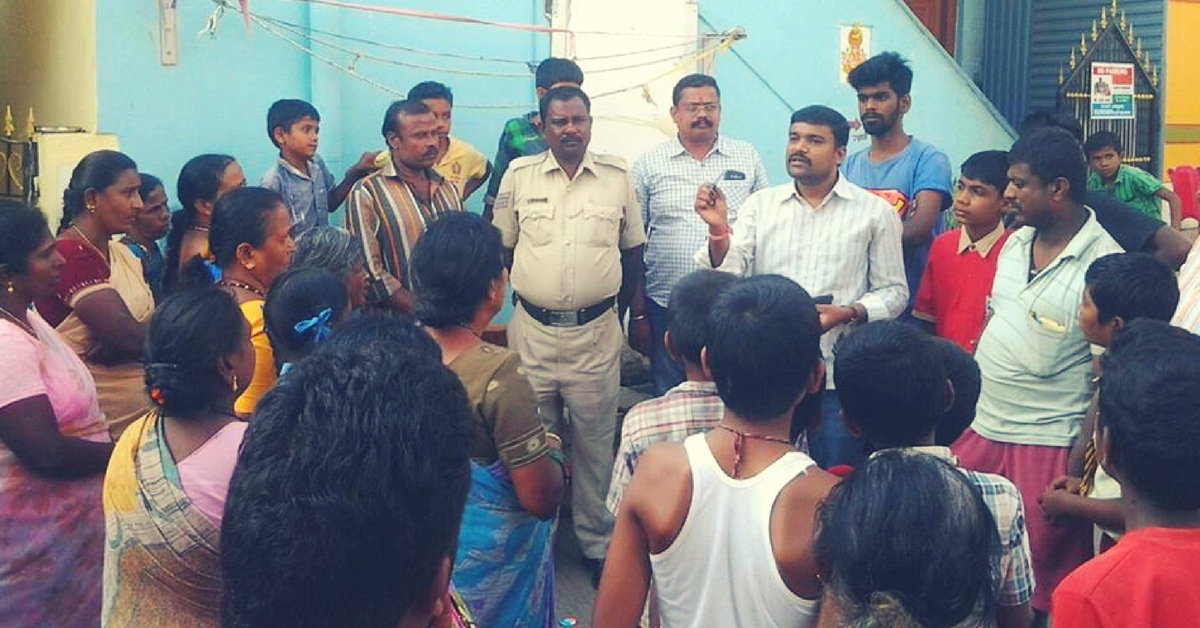A Community Policing programme started by the Bengaluru City Police in collaboration with an NGO – Janaagraha Centre for Citizenship and Democracy, aims at creating a safer and more secure environment, where the police and community members become guardians of law and order.
Catching culprits, solving a crime, maintaining law and order – aren’t police officers responsible for all these and more? Well, they are. But can’t common people be responsible for them too?
“In our society, when a police van comes to one’s house, it sends across a wave of fear and gossip in the neighbourhood. The police are to be feared and to be kept at a distance. We are trying to change this mentality through a community policing initiative. We want to demonstrate that when the police and the citizens work together in mutual collaboration, the entire society becomes safer and happier,” says Jacob Punnoose, former Director General of Police (DGP) and Inspector General of Police (IGP), Kerala.
Punnoose is currently on the advisory committee of the community policing initiative taken up by Bengaluru Police in collaboration with NGO Janaagraha.

Community policing is, in essence, an effort to establish collaboration between the police and the community to identify and solve several problems. It is based on the fact that in today’s world, the police can no longer be the sole guardians of law and order; members of the community need to play an active role too.
According to United Nations’standards, effective policing requires a ratio of one police official per 333 civilians. In India, the average ratio is one police official per 761 civilians. In Karnataka, it is one police official per 751 civilians. This clearly shows the shortage of police force. While the police officials often use preventive measures like random patrolling, it is only with the help of alert citizens that they can prevent and solve crimes. So Janaagraha decided to bridge the communication gap between the police and people.
“Two major crime-related incidents took place in Bengaluru in 2008.The tragic terror attack on the campus of Indian Institute of Science left us in shock. And then came the alarming discovery that a group of LTTE militants had been living undetected in the community for many months. That was the time Janaagraha first started contemplating about how a deeper connection between the community and the police could prevent such incidents,” says a spokesperson of Janaagraha.
Also read: This Police Constable Climbed a Hill Barefoot to Save a Man from Committing Suicide
After a series of discussions among officials from Bengaluru City Police, the Home Minister of Karnataka, and other bureaucrats, a community policing programme was designed. It was launched in June 2013 and piloted in seven police stations across Bengaluru: Ashok Nagar, JP Nagar, Banaswadi, Jnanabharathi, Madivala, Rajgopalnagar, and Yelahanka. The programme enrolls Area Suraksha Mitras (ASMs) from the citizens, who then collaborate with police officials on a regular basis to maintain law and order in their allotted beats. The ASM candidates are nominated by the police constables from each police station and the shortlisted candidates then undergo a process of verification and selection. Those who met the criteria are selected for a period of two years.
“There are over 500 ASMs active in the city currently. They help maintain safety by providing support and information to fellow citizens — liaising with police to hold community meetings and reporting security concerns to the local police. Every police station has around 30 to 50 ASMs, depending on the size of the beats and population under each police station jurisdiction. These ASMs, along with the police personnel, form the Suraksha Samithi, meet once a month to discuss the safety and security issues at the local level,” says Valli Narasimha, Community Policing Manager of Janaagraha.
The community policing programme uses different activities and initiatives to accomplish the goal.
Formal as well as informal awareness programmes are organised, where the ASMs and the police officials discuss different issues like security and safety precautions, the crimes happening in nearby areas, and how they can be prevented with the collaboration of citizens. Some awareness programmes are organised in public spaces like gardens where everyone can participate. ASMs also conduct door-to-door visits to create awareness and know the community better.
The advisory group of the programme consists of three reputed former DGs and IGPs: P K H Tharakan, former DG and IGP, Kerala, and former advisor to the governor of Karnataka; Dr. S T Ramesh, former DG and IGP, Karnataka; and Jacob Punnoose who implemented community policing in Kerala for the first time.
“Certainly an initiative like this should be taken up by the government. There’s no doubt about that! However, before any idea becomes a public policy, a voice needs to be created in the society. Instead of presenting ideas to the government on paper, if there’s an initiative as well as experimentation to show, it works better. In Kerala, we implemented community policing 20 years ago. It was a new concept, but once it was proven that this works, the government decided to make it official. What we are doing in Bengaluru is similar. This is a small experiment, but it will demonstrate that the concept has potential. Eventually, as it grows, the government can take it up officially,” says Punnoose.
The concept of community policing has been widespread in the western countries for decades. According to Punnoose, one of the major differences between the west and India is the communication gap between the police and people.
Also read: How Postal Dept & Police in a Kerala District Are Solving Issues of 1000 Students Using Postcards
“We have this concept of ‘rulist police’. There’s a distance between the people and police. We often see that people hesitate to report crimes they witness because they wish to avoid interaction with the police. I think that’s the biggest challenge that we face,” he says.
The programme, nevertheless, has shown positive results since its implementation in Bengaluru. The response from the police officials, as well as the community, has resulted in the addition of 11 more police stations to the programme in 2015.
A recent incident in Bengaluru’s Rajgopalnagar underlined the importance of community policing. An elderly man suffering from memory loss had strayed from his home and couldn’t find his way back. ASM Rameshappa saw him wandering on the street and took him to the police station, from where he was safely transferred to an old age home.
A couple days later, when the old man’s family members came to the police station to register a missing complaint, the police officer recognised him from the photograph and he was reunited with his family.
“Community policing has far-reaching implications. The community is no more passive; its members voice their concerns, contribute advice, and take actions. The ASMs become catalysts for solving neighbourhood crime and safety issues, and for citizens and police to form a strong and cooperative relationship to make the community safer,” says Valli Narasimha.
Also read: How a Social Worker Worked With Bengaluru Police to Help a Lost Old Man Find His Family Again
To know more about Community Policing, visit their official Facebook page here.
Like this story? Or have something to share? Write to us: contact@thebetterindia.com, or connect with us on Facebook and Twitter.
NEW: Click here to get positive news on WhatsApp!
If you found our stories insightful, informative, or even just enjoyable, we invite you to consider making a voluntary payment to support the work we do at The Better India. Your contribution helps us continue producing quality content that educates, inspires, and drives positive change.
Choose one of the payment options below for your contribution-
By paying for the stories you value, you directly contribute to sustaining our efforts focused on making a difference in the world. Together, let's ensure that impactful stories continue to be told and shared, enriching lives and communities alike.
Thank you for your support. Here are some frequently asked questions you might find helpful to know why you are contributing?

